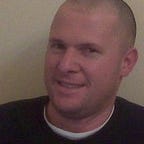The question every product leader should be asking (in 2023)
Some context
Hello again, it’s been a while. Sorry, been busy. Hope this article makes up for the delay, and to come back to writing on a more regular cadence.
2022 has been a year filled with changes, personal and professional. On the latter, I changes three jobs this year. One commonality is that I have been fortunate to work with elite talent: informed, opinionated, and most importantly, curious.
To give this article context, recently I joined a large technology organization in the financial space. Won’t advertise here, details in LinkedIn. That company’s description is intentional, that’s how they see themselves. My team is responsible to help (many) internal developers to develop faster (reduce cycle time from code to user) while maintaining the well-managed aspects of the applications. It’s a fascinating challenge because we do not get to choose: with millions of financial services consumers, applications must be available, perform well (performance and behavior), we need to control spend etc. We need to make these work in tandem.
The biggest change for me, leading to this post, is the amount of people around me. This isn’t a 10 people startup. So, as a product lead, the span of attention on team members, users, stakeholders and their motivations is front and center. It’s not only user adoption, product fit and edge.
“What are you optimizing for?”
Has been my mission since I joined. See, for the product we create, this goal is (hopefully) addressed through OKRs. People are also optimizing in their personal and professional lives. For example, some optimize on travel and adventure, and own an RV. Others on luxury and they invest in business class travel and lounges. You get it.
Product leadership is all about informal influence and servant leadership. Whether it’s your team, your peers or those representing stakeholders and users, it’s the essence of your job to find what they are optimizing for, and keep that in context.
Many optimize for the next job, explicitly or implicitly. You can see they analyze prospective next opportunities, titles, levels and timeline. Pragmatic ones will demonstrate behavior matching the next level profile in their current job, making themselves an obvious fit. You need to ensure the aspects of their current role prepares them to that next one.
Others optimize on stability. They aren’t rushing for the next role or title, they just want to do a really great job at their role. And again here, you want to leverage their perspective and contribution, getting them involved and to own aspects of the product is significant to their sense of belonging and contribution, and therefore, safety.
On the flip side, instability or lack of room for growth are lethal. Team members will quickly recognize that and plan their ‘escape route’.
As a product leader, a key ingredient of a creating the unicorn team is to discover, unpack the optimization criteria, and adjust the “day in a life” for that person such that they find their interest reflected in the role you wish for them to play.
The same goes for your peers, the dev lead, design and scrum, and for your user base. They are all optimizing for something and that’s your path to establish success.
So that’s my advice to you as you roll on 2023: get busy on understanding what your team, users, stakeholders (in that order) are optimizing for.
From your audience perspective, there’s a few other critical fundamentals to optimize your success:
Leadership alignment
Similar to previous point, its critical (especially where skilled groups- product, dev etc. are siloed) to understand what your leadership peers are optimizing for. The dev lead might be optimizing on fast and risk-free delivery of app functionality. Far easier said than done. You can help by aligning and driving the right mindset.
Similarly, the program/scrum team, the design team will have their own optimization criteria. They need to find ways to embed themselves in the process with good contribution and minimize friction. Make sure to understand, represent your perspective and align. The one thing team members experience and get frustrated over is lack of alignment. The same thing, done right, demonstrates cohesion that creates unicorn teams.
Enablement and (im)patience
This one hit home for me. I’m known to be geeking out on product management mindset and tooling. But not everyone is like that. It’s important to enable everyone (and get them involved) with the concepts you want to use to facilitate how your product gets built: from the vision, OKRs, product themes and key features, the timeline etc. The process in which you want to plan and review progress, user adoption, OKR review, roadmap etc. How to drive a data-driven mindset in your team. Don’t just assume everyone knows everything and is aligned. If you do, you will see a sluggish planning cycle, repetitive meetings and frustration. Spend the time, enable the team and listen to feedback. And one more thing: recognize it’s a change and be patient.
Inspiration and Curiosity
Preserving your team is one thing. Driving engagement is a whole different story. There are two simple ingredients here: Is the problem you’re intending to solve (as a team) compelling, and do I (as an individual on the team) get to play? It’s a simplistic paraphrasing of Marty Cagan’s “Inspired” and “Empowered”. You need a compelling vision (“what do you optimize for?”) and empowerment. It takes time and energy to create and maintain, but your team curiosity is what will drive awareness and innovation.
Hope these tips will serve you well as you think about your 2023 priorities as a product lead. Would love to get your perspective!
